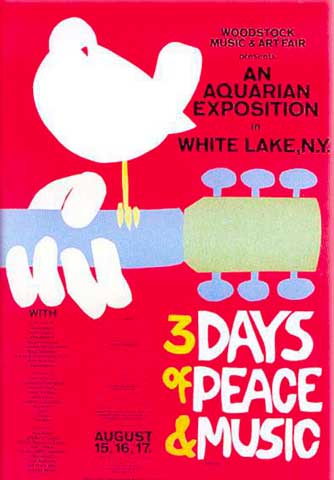The Woodstock music festival took place 50 years ago this week. The event, attended by more than 400,000 people, featured performances by Richie Havens, Arlo Guthrie, Joan Baez, The Who, Santana, Jimi Hendrix, Janis Joplin and dozens of other musicians. Many of the people involved in Woodstock were Jewish, including the producers (Michael Lang and Artie Kornfeld); the primary financial backers (Joel Rosenman and John P. Roberts); Max Yasgur, who rented his farm for the event; and many of the performers, including Jorma Kaukonen and Marty Balin of Jefferson Airplane; Arlo Guthrie; Country Joe and the Fish (Joe McDonald and Barry Melton); and Mickey Hart of the Grateful Dead. Members of the Monticello Jewish Community Center also played a role at Woodstock. What did they do?

woodstock-1969 by Ray MacLean is licensed under CC BY 2.0.
A. When the producers realized early on that hundreds of thousands of people were descending on Yasgur’s Farm, far beyond the 80,000 who were expected, they decided to make Woodstock a free event, and they took down the fences around the site. They put out a call for food, as they were not prepared to feed such a large crowd, and members of the Monticello Jewish Community Center, a nearby synagogue, made thousands of cold cuts sandwiches for the attendees.
B. There was a bar mitzvah scheduled to take place on the morning of August 16, right in the middle of the music festival. When members of the congregation learned of the upcoming event at nearby Yasgur’s farm, they realized that the onslaught of thousands of people would create chaos on Route 17, the primary road to their town. They sued to try and prevent the festival from taking place, fearing that bar mitzvah guests would not be able to reach the synagogue; however, a judge dismissed their suit saying that the festival permit had been legally obtained and that it was too late for them to object.
C. Because of the massive crowds attending Woodstock, festival producers had to be very creative in finding ways to feed, house, and transport the performing musicians. Some acts were brought in by helicopter because, as Arlo Guthrie famously announced, “The New York State Thruway is closed, man.” Other acts managed to get to the site but could not leave. Sha Na Na, the 1950’s doo-wop style group, performed their set, but then found themselves unable to get back to New York City. Many of the members of the band were actually Jewish, and one member, Rich Joffe, had a cousin who was a member of the Monticello Jewish Community Center. He called his cousin, and as a result, the synagogue agreed to house the band overnight, with members coming into the building to prepare meals and set up cots for the band members to sleep on. As a way of thanking the congregation, Sha Na Na returned a year later and performed a concert at the synagogue as a fundraiser.
D. Realizing that many of the attendees at Woodstock were Jewish, members of the Monticello Jewish Community Center set up a tent on the grounds of the festival site and provided kosher meals. They also hosted Shabbat services on Friday night and Saturday morning.
E. The Monticello Jewish Community Center heard about the upcoming Woodstock music festival and decided to put on their own Jewish music festival for visitors to the Catskills. The event was marketed under the name WoodShlock using the slogan, “Three days of food, music, food, peace, food, and did we mention, food?” Entertainers included Rabbi Shankar; Melanie Zoftig; Country Joe and the Gefilte Fish; Joe Alta Cocker; Sly & The Mishpacha Stone; Sha Na Nach Nachma Nachman; Blood, Sweat & Tsuris; and Kreplach, Shtups, Nosh, and Yid.
